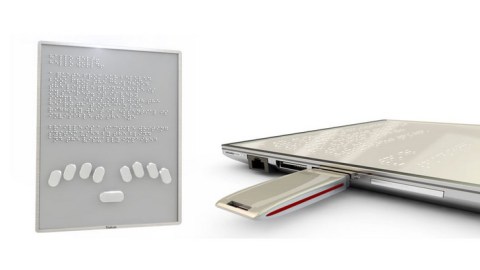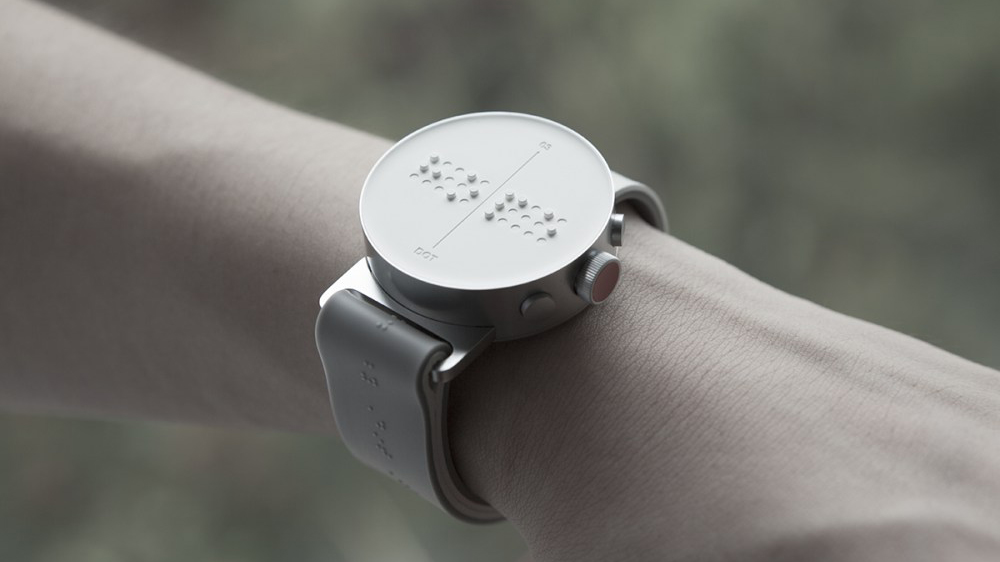The World’s First Tablet for Blind People

When Louis Braille invented the Braille system in the 1820s, it became a fundamental tool for literacy for the millions of blind and visually impaired people in the world. Unfortunately, these people have been left out of the digital revolution. Smartphones, tablets, and e-books remain inaccessible and mostly useless to the 285 million blind and visually impaired.
Blitab, a Vienna-based startup founded by three Bulgarians, is now bringing the tablet experience to blind and visually impaired people. The device is similar to an e-book, but uses liquid-based technology to create small, physical bubbles that rise and fall on the surface on demand to display the necessary text or graphics. The best part is that the user can insert a USB stick or a memory card with various types of text documents, such as a Word .doc or PDF and Blitlab will convert and display them in Braille. It can do the same with web pages and digital maps. In addition, the user can write and edit pages via Braille Perkins keyboard.
“Currently there are some solutions which are extremely expensive and they represent only one line [of braille],” says Slavi Slavev, one of the co-founders. “These devices were developed 40 years ago and because no one has offered any new innovations since then, that’s still all that’s on the market. … [Blitab] is revolutionary and we want to solve a great issue, and that’s the literacy of blind people. The technology is quite scalable so we can output images and put any tactile relief representation like maps and graphics, such as geometric figures, in order to serve as an educational tool for blind people.”
Blitab has won various awards so far and has attracted interest from institutions like the Royal National Institute for the Blind in the UK, but is currently still in the prototype stage with a tentative plan to launch the product in 2016. The team is looking for developers, testers, distributors, and investors. If you want to help out, you can contact the team here.
Photo: BLITAB





